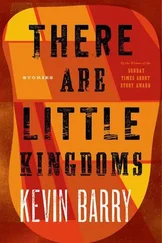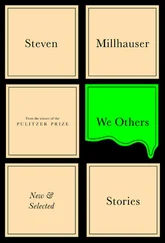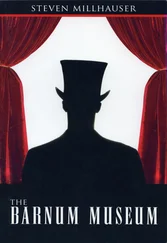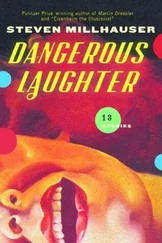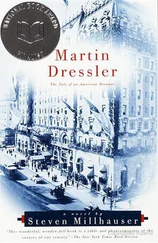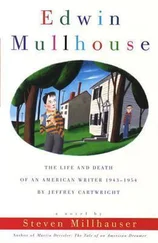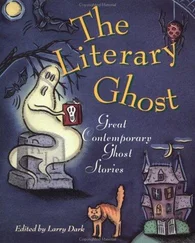Later that night Elizabeth recorded the events of 26 July in a rapid, excited hand. The painting “thrills and frightens me — pierces me to the very core.” It is “dark and terrible — the image of Satan — dark.” In the terrible eyes she sees “suffering — and sorrow — and evil unspeakable.” She “cannot bear” to look at it “and yet — and yet.” She begged Edmund to leave the painting with her for the night, so that she might speak with him about it in the morning.
The events of 27 July are occasionally hazy in detail, although clear enough in outline; there is no reason to doubt the accuracy of Mrs. Duff’s Report. Edmund rose early and went down to breakfast, which he ate alone in the kitchen-parlor. Elizabeth sometimes slept to mid-morning or later, and he was careful not to disturb her. He returned upstairs to his room, perhaps to work on a painting laid aside months earlier, and was interrupted by Mrs. Duff’s cry. He hurried downstairs. Elizabeth was unconscious and breathing erratically. Edmund hesitated for only a moment before leaving Mrs. Duff with Elizabeth and running the half mile into Saccanaw Falls, where he found that the local doctor was out on his rounds. He promptly hired a trap to take him to Strawson, only to discover that Dr. Long was attending a patient six miles away. In Strawson he was able to find a second doctor, a Dr. Parrish, who returned with him to Stone Hill; Dr. Parrish strode into the sickroom, bent over Elizabeth, and pronounced her dead. About fifteen minutes after the doctor left — it is not clear how long he remained — Sophia and William arrived. At the door Mrs. Duff informed them of Elizabeth’s death. Sophia rushed wildly into the room, followed by Mrs. Duff, and threw herself to her knees beside Elizabeth. Sobbing hysterically, she seized Elizabeth’s hand and began kissing it over and over again and pressing it to her tearstained cheek. William stood for a moment in the doorway, stunned and trembling, before walking into the room and sitting abruptly on the edge of the bed, where he bent his face into his hands. Moorash sat expressionless in a chair on the other side of the bed. Suddenly Sophia stood up, looked wildly about, and stepped over to a small sewing table, where she pulled open a drawer and removed a pair of sharp scissors. Uttering a cry, she ran to the portrait, which still stood on the easel at the foot of the bed, and began slashing at the face with the scissors. During this outburst Moorash stared at her from his chair but did not move. After striking repeated blows, Sophia dropped to her knees, raised her eyes to the ceiling, and with both hands thrust the scissors into her throat. Even as she raised her arms to strike the blow, Moorash leaped from the chair, but he was too late to prevent the scissors from entering with full force. It appears that he next attempted to wrench the weapon from her grasp, but Sophia, though bleeding profusely, struggled violently, as if she were being attacked. It was only now that William, as though startled out of a dream, tore himself from Elizabeth’s side and with a “wild look” and “strangled cry” rushed over to the struggling pair. Moorash had succeeded in pulling the bloody scissors from Sophia’s throat, and there now took place a fierce struggle between Moorash and William for possession of the scissors, in the course of which Moorash was wounded in the neck — it is not clear how. It is impossible to tell from the Report whether William was attempting to prevent a second suicide, or whether, in his half-mad state, he attacked his friend. William suddenly seemed to come to his senses and, holding Edmund gently, laid him on the floor. He became brisk and efficient, tearing strips of cloth to staunch the wounds of Edmund and Sophia, and ordering Mrs. Duff to fetch a doctor. When she returned some twenty minutes later with Dr. Parrish, whom she had overtaken on the road to Strawson, she found William lying on his back on the bed beside Elizabeth, one arm outstretched. She did not know at first that he was dead. On the floor lay one of Moorash’s hunting pistols, which William had removed from the small deal table in the upstairs bedroom. Moorash was dead (later it was determined that he had died from a stab wound in the throat). Sophia was alive but unconscious; she died early the next morning.
A tableau of bloody corpses presided over by a mangled painting is an effect that Moorash would have deplored; he detested banal visions of the knife-and-cadaver kind. That his life should have ended as an imitation of a mediocre academic painting would nevertheless, one imagines, have elicited from him a wry smile, for it was his conviction that the contrivances of art were always superior to the accidents of life.
The Self-Portrait is badly damaged; despite painstaking restorative efforts, much of the face, including both eyes, is so torn and scratched as to be virtually unseeable. Nevertheless, the design or plan remains clear. Moorash retained the motif of lake, hills, and sky that he used in his three late portraits, as well as the method of mythic representation: the shadows of wings are visible, as if he had intended to portray himself as a great dark angel, a fierce and fallen Lucifer. Although even in its mutilated form the portrait retains a certain power, the damage condemns it to an uneasy place in Moorash’s oeuvre, for it seems to hover in a limbo between art and biography, between the realm of imperishable beauty and the world of decay.
Elizabeth and Edmund were buried in the small graveyard in Saccanaw Falls, within sight of Stone Hill. The parents of Sophia and William insisted that they be returned for proper burial in the family plot in Philadelphia.
In October 1846 Charlotte Vail died, after a lingering illness.



